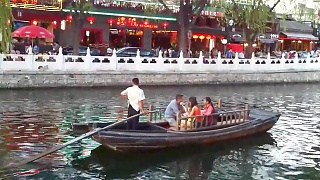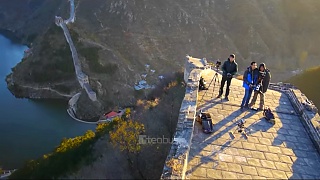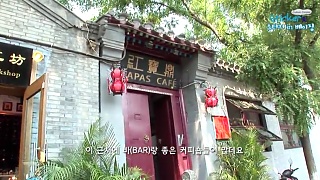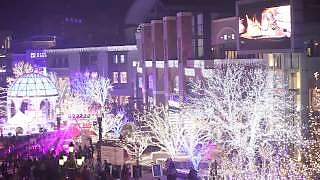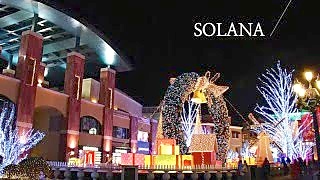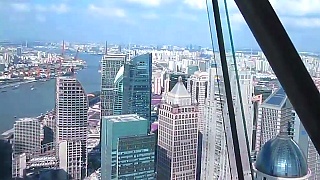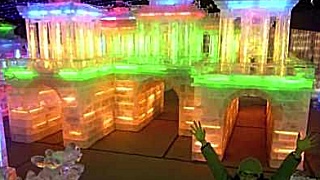With Walk For You ...
[640],shadow=true,start=,stop=Solana Lifestyle Shopping Park Guide - Beijing
Overview
Solana Lifestyle Shopping Park is designed to resemble a European town, complete with cobblestone streets and a picturesque lake. It covers a vast area and offers a diverse mix of international and local brands, restaurants, cafes, and entertainment options.
Getting There
Location: No. 6 Chaoyang Park Road, Chaoyang District, Beijing, China.
Public Transport:
- Subway: Line 14, Zaoying Station, Exit A. Walk about 10 minutes to reach the mall.
- Bus: Multiple bus lines stop near the mall, including 419, 621, 671, 984, and 985.
Shopping
Solana hosts a variety of stores ranging from luxury brands to more affordable options. Some popular retail categories include:
- Fashion: Zara, H&M, Uniqlo, and high-end brands like Michael Kors and Guess.
- Beauty: Sephora, The Body Shop.
- Home Decor: Muji, Zara Home.
- Electronics: Apple Store, Xiaomi.
Dining
The mall offers an extensive selection of dining options, catering to diverse tastes:
- Western Cuisine: Blue Frog, Element Fresh, and Wagas.
- Asian Cuisine: Din Tai Fung for dumplings, Haidilao for hotpot.
- Cafes: Starbucks, Costa Coffee, and local favorites like Pacific Coffee.
- Specialty Food: Bakeries, ice cream parlors, and specialty tea shops.
Entertainment
Solana is not just about shopping and dining; it also provides various entertainment options:
- Cinema: A state-of-the-art cinema showing the latest movies, including IMAX screens.
- Kids' Activities: Indoor playgrounds, toy stores, and seasonal events for children.
- Outdoor Spaces: The park surrounding the mall is great for a stroll, with picturesque views and seasonal decorations.
Special Events
Throughout the year, Solana hosts various events and festivals, such as:
- Holiday Decorations: Elaborate Christmas and Chinese New Year decorations.
- Music and Cultural Festivals: Live music performances, art exhibitions, and cultural shows.
- Sales and Promotions: Seasonal sales, especially during Chinese New Year and Golden Week holidays.
Tips for Visitors
- Best Time to Visit: Weekdays are generally less crowded than weekends.
- Language: While many staff members speak basic English, having a translation app can be handy.
- Payment: Most stores accept major credit cards, but having some cash or using mobile payment apps like WeChat Pay or Alipay can be useful.
Nearby Attractions
- Chaoyang Park: Adjacent to the mall, offering additional recreational activities.
- Sanlitun: A vibrant area with nightlife, shopping, and dining options, just a short drive away.
Conclusion
Solana Lifestyle Shopping Park offers a comprehensive shopping experience with its blend of retail, dining, and entertainment in a beautifully designed environment. Whether you're looking to shop, eat, or just enjoy a leisurely day out, Solana is an ideal destination in Beijing.
Beijing, the capital city of China, is a vibrant metropolis steeped in history, culture, and modernity. Here's a brief overview of what you can expect as a tourist in Beijing:
Historical Landmarks:
The Great Wall of China: One of the most iconic structures in the world, the Great Wall is easily accessible from Beijing. Mutianyu and Badaling sections are popular among tourists.
Forbidden City (Palace Museum): A UNESCO World Heritage Site, this vast imperial palace complex was home to Chinese emperors for over 500 years. It houses numerous halls, courtyards, and historical artifacts.
Temple of Heaven: A masterpiece of Chinese architecture, this ancient temple complex served as a place of worship for emperors to pray for good harvests.
Summer Palace: A stunning ensemble of lakes, gardens, and palaces, the Summer Palace served as a retreat for emperors during the Qing dynasty.
Tiananmen Square: One of the largest city squares in the world, Tiananmen Square is flanked by important landmarks such as the Monument to the People's Heroes, the Great Hall of the People, and the Mausoleum of Mao Zedong.
Cultural Sites:
Beijing Hutongs: Explore the narrow alleyways and traditional courtyard residences of Beijing's historic neighborhoods. You can take a rickshaw tour or simply wander around on foot.
Beijing Opera: Experience traditional Chinese opera performances at venues like the Liyuan Theater or the Chang'an Grand Theatre.
798 Art District: A hub of contemporary art and culture, this former industrial area is now home to numerous galleries, studios, and cafes.
Modern Attractions:
Olympic Park: Visit iconic structures such as the Bird's Nest (National Stadium) and the Water Cube (National Aquatics Center) from the 2008 Beijing Olympics.
CBD (Central Business District): Marvel at the futuristic skyline of Beijing's modern business district, which includes landmarks like the CCTV Headquarters and the China World Trade Center Tower III.
Culinary Delights:
Peking Duck: Indulge in Beijing's most famous dish, crispy roast duck served with pancakes, scallions, and hoisin sauce.
Street Food: Explore the city's vibrant street food scene and sample local delicacies like jianbing (savory crepes), lamb skewers, and dumplings.
Practical Tips:
Transportation: Beijing has an extensive public transportation system, including the subway, buses, and taxis. However, traffic can be heavy, so plan your travels accordingly.
Language: While English is not widely spoken, especially outside tourist areas, many signs and transportation announcements are in English. It's helpful to carry a translation app or a phrasebook.
Weather: Beijing experiences four distinct seasons, with hot summers and cold winters. The best times to visit are spring (April to June) and autumn (September to October) when the weather is mild and comfortable.
Etiquette: Respect local customs and traditions, such as removing your shoes before entering someone's home and using both hands to pass or receive items.
Beijing offers a rich tapestry of experiences for tourists, blending ancient heritage with modern innovations. Whether you're fascinated by history, culture, or culinary delights, there's something for everyone in this dynamic city.
 The Solana lifestyle shopping park mall and Sanlitun in BeiJing
The Solana lifestyle shopping park mall and Sanlitun in BeiJing